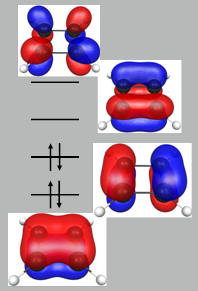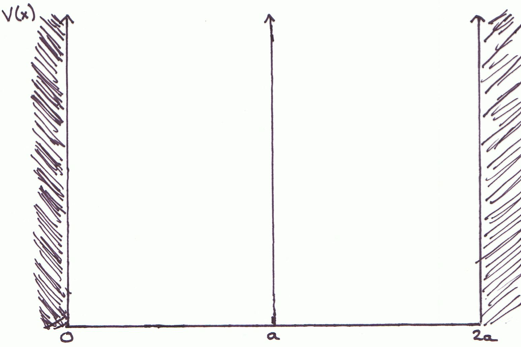Questions 10 and 11 (1st part)#
Problem 10 uses the following figure, which is not rendering for some people

Problem 11 uses the following detailed problem description.
Modern displays often use quantum dot technology, where one (or more) electrons are confined to a region within a material. For an electron confined to a rectangular region in two dimensions, it is reasonable to approximate its motion perpendicular to the rectangle with harmonic confinement. The time-independent Schrödinger equation, eigenfunctions, and eigenvalues for a harmonically confined electron are, in atomic units:
where the eigenenergies are
and the eigenfunctions are given in terms of the Hermite polynomials, \(H_k(z)\), as:
The Hamiltonian for an electron confined to a rectangular region, in atomic units, is then:
where
11. ✍️🖩 What is the wavelength that corresponds to the lowest-energy excitation when \(a_x = 16\), \(a_y = 9\), and \(k_z = 4\)? Report your answer in nm. Hint: You may find it useful to recall that the speed of light is 137.036 in atomic units.
Questions 4 and 5 (3rd part)#
The figure didn’t render properly for everyone. Here is what you need.

